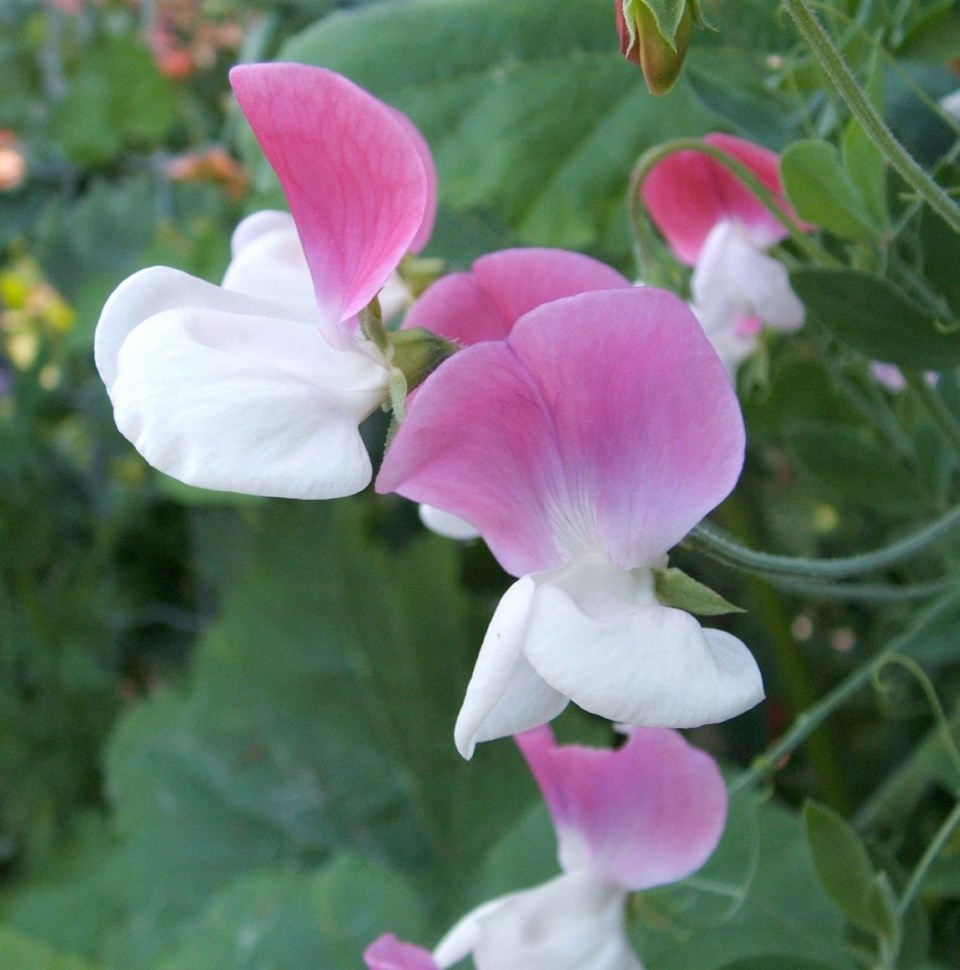Dear Helen: Can sweet peas be seeded outdoors here in the fall? If not, what are the best times for seeding? What are your favourite sweet peas and what seed source do you favour?
F.L.
I’ve not yet made outdoor sowings in autumn, but your question has prompted me to make a note in my 2020 garden calendar to try��it. From local research that I’ve accessed, I think that around mid-October would be an ideal timing, in the middle of the hardy spring bulb planting season.
Autumn outdoor sweet pea seeding works well for some local gardeners. Where it succeeds, the��result is the formation of extra-strong and extensive root systems and, depending on the weather, sturdy growth beginning as early as late winter.
The degree of success in this venture will depend on winter weather and soil conditions. Highly compacted, winter-wet clay soils would be problematic. Ideal is a site with a light-textured, sandy soil that drains rapidly of excess moisture. Where the seeds survive and germinate well, they will usually produce the��strongest, most robust plants possible.
Excellent plants can also be produced from an early February indoor seeding and transplanting early in the spring, in March if conditions permit. A third option is seeding outdoors in March, or as early in spring as possible.
In the realm of old gardening lore there is advice to seed indoors on St. Valentine’s Day (Feb. 14) and transplant on St.��Patrick’s Day (March 17).
West Coast Seeds lists a good selection of sweet pea varieties. For autumn sowing they suggest Mammoth Blend for the earliest blooms. To extend the season of flowers, the Late Spencer Blend would be an appropriate choice. The Royal Family Blend is a good old reliable standard. The plants begin flowering after the Mammoth mix and before the Spencers.
Spencer Ripple, which is among the most fragrant of sweet peas, bears artfully streaked blooms in dark colours against pale backgrounds. In the formal classification of sweet pea flower types, this streaked style is known as “Flake.”
I have found some of the heritage sweet peas the least demanding of perfect growing conditions. They have smaller, but very fragrant, flowers. An example is Painted Ladies in pink and white. Black Knight is another favourite heirloom, in gorgeous maroon and violet. It’s available from Florabunda Seeds, a 91ԭ�� seed source specializing in cottage garden and heirloom varieties of annual flowers, perennials, vines, vegetables and herbs.
��
Dear Helen: I’ve been looking for potted primrose plants to acquire for creating a touch of springtime on a table by my front door. I��haven’t been able to find any of��these plants. Do you know of��a��source?
O.D.
Primrose plants usually become abundant in local garden centres in January. They are popular for the reason you state, as a colourful taste of spring in midwinter.
Some people set them on a deck or patio, next to glass doors where they have some protection from harsh weather and where they can be appreciated from inside the house. Indoors, they will do a fast fade in warm temperatures. Set them in a cool, bright spot. Such sites are often found next to a window and away from heat registers.
Dear Helen: I read your column last month about using leaves as��a��protective mulch over bare patches of soil and also around winter vegetable plants and in compost heaps. I followed your advice on covering the soil with leaves and now wonder whether I’m fostering vast, expanding hordes of slugs under all that cosy��cover. Am I reasonable to��fret?
E.V.
Fret not. It is unlikely that slug egg production will continue over the winter. Eggs already laid in late autumn will be over-wintering, to hatch in the spring.
Though slug activity slows down in the coldest months, there will be some feeding. Slugs underneath and in the leaves will feed on and break down the most conveniently located food — the leaves. Those leaves will also be home to several kinds of slug predators such as ground beetles.
Slugs are most active in moist, moderate weather, when there is consistently adequate rainfall and temperatures above 10 C. In our region that means early spring to early summer and also during mid-autumn — specifically, in October. Here, September is often dry and November usually brings colder temperatures.



